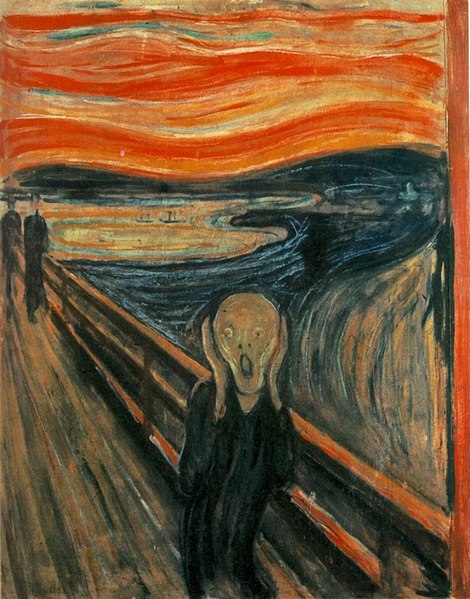Table of Contents |
The artwork that you will be looking at today covers the period from 1851 to 1898, and focuses geographically on three locations: London, England; Paris, France; and Oslo, Norway.

The Symbolist movement was anti-rationalist in philosophy and sought to depict the world of spirituality, imagination, and dreams. Heavily influenced by Dark Romanticism and an eventual influence on the development of Surrealism, Symbolists felt that painting should depict more than just what can be seen, as in Realism. Instead, art should express emotions in visual form.
Odilon Redon was one of the Symbolist movement’s most important figures. Like Surrealist paintings to come, the Symbolist paintings such as “The Cyclops,” shown below, are open to quite a bit of interpretation.

1898
Oil on cardboard
Edvard Munch was a Norwegian painter whose style is often cited as one of the most important in terms of its influence on Expressionism. His painting “Madonna,” shown below, while open to interpretation, is almost always agreed upon by critics as not depicting the holy Madonna, but rather a beautiful woman.

1894
Oil on canvas
It’s hard to say whether this was someone specific, or was symbolic of all women. Some have described it as representative of a femme-fatale, suggestive of the power of women. Others, however, feel that this was a depiction of a woman in the throes of passion. Munch often used an aura of color such as you see here to heighten a certain implied sensation, such as pleasure.
This next example, Edvard Munch’s “The Scream,” is one of the most famous paintings in history. It’s a form of early Expressionism depicting the now-iconic image of a man in a fit of intense anguish or fear. Supposedly, it isn’t the man screaming, but rather his awareness of a primal scream or shriek passing through nature, which would explain why his ears are covered by his hands.

1893
Oil on canvas
Munch apparently based the painting on a similar experience he had had while walking along a pier with friends, who are seen in the background. Munch uses swirling lines that repeatedly return you to the main figure of the painting, while the brush strokes of the deck of the pier almost feel as if the friends are accelerating away from him, or he’s accelerating away from them.